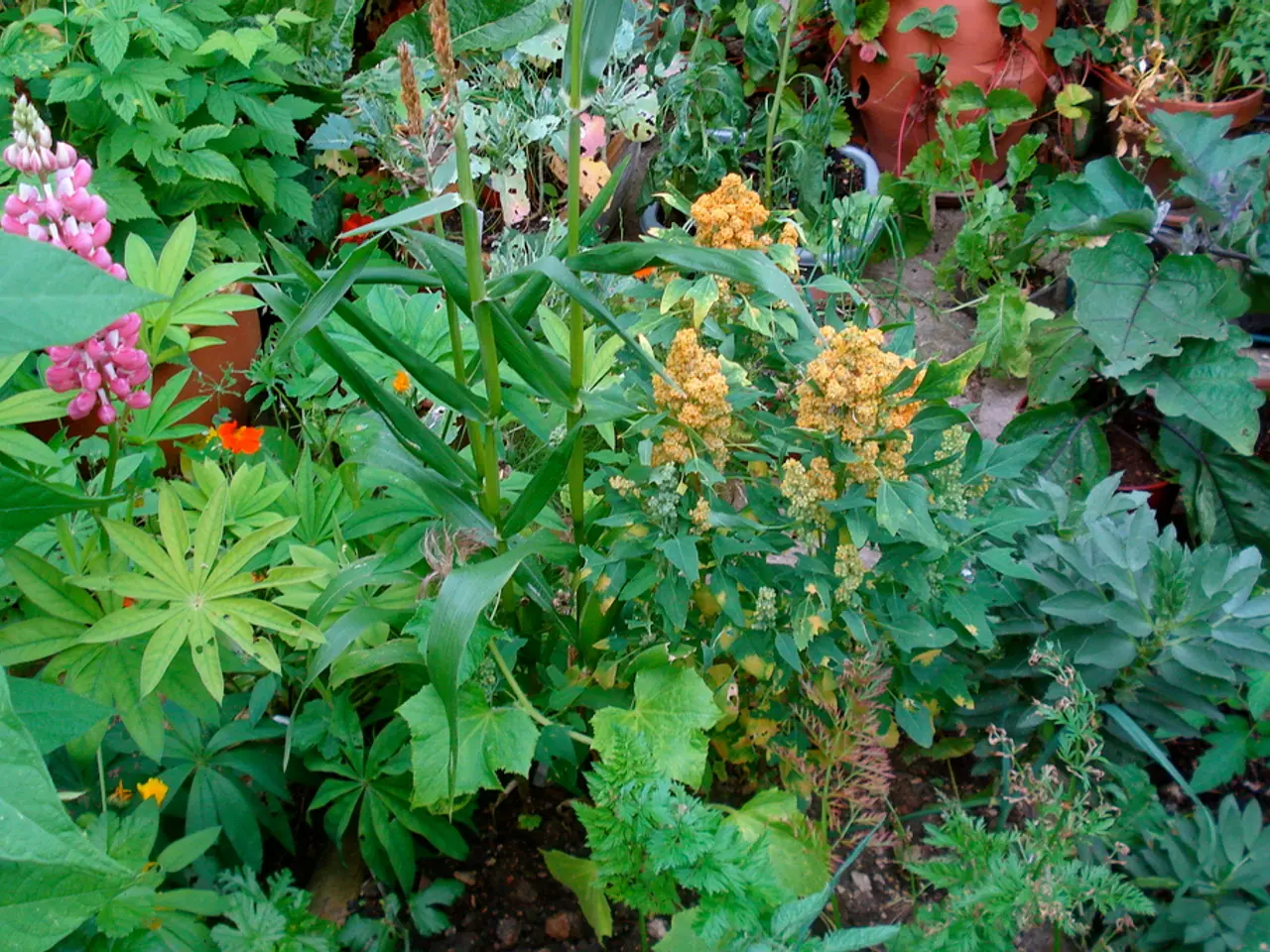Commencing Your Permaculture Adventure: A Detailed Handbook for Novices
In the late 1970s, a revolutionary approach to gardening and farming was born in Australia. Known as permaculture, this system was the brainchild of Bill Mollison and David Holmgren, two visionaries who sought to create sustainable, self-sufficient, and environmentally friendly systems [1]. Today, permaculture has gained widespread recognition as a powerful tool for transforming gardens into thriving, biodiverse ecosystems.
Reducing Lawn and Embracing Native Plants
One of the first steps in implementing permaculture principles is to reduce the amount of lawn and replace it with native plants [2]. Native plants are adapted to your local climate and require less water, making them a more sustainable choice. Grouping plants by their water needs optimizes irrigation, saving water and resources [2].
Catching and Storing Energy
Rainwater harvesting is another key aspect of permaculture. Collecting rainwater from roofs using barrels or tanks can provide a valuable resource for irrigation and other non-potable uses [3]. Composting garden waste is also crucial, as it creates nutrient-rich soil that requires less external fertilizers [3].
Obtaining a Yield
Guild planting, or planting companion species together, is a permaculture technique that enhances growth, reduces pests, and increases biodiversity [4]. Planting a variety of crops ensures a continuous yield and promotes ecosystem health [4].
Applying Self-Regulation and Accepting Feedback
Regularly monitoring and adapting your garden's health is essential in permaculture. Utilizing local materials and resources minimizes external inputs [5].
Using Renewable Resources
Solar power can be used to reduce dependency on non-renewable energy, whether it's for tools or irrigation systems [5]. Organic amendments like compost tea or kelp are natural ways to enhance soil health [3].
Creating a Healthy Soil Sponge
Deep-rooted plants improve soil structure and water retention, making your garden more resilient [2]. Minimizing tillage preserves soil organisms and structure [2].
Incorporating Livestock (If Possible)
Even in small spaces, animals like chickens can help with pest control and contribute to nutrient cycling [4]. They also provide eggs and manure for soil fertilization.
By following these principles, you can create a thriving, sustainable garden that embodies the principles of permaculture. Organic gardening practices, such as using cover crops, help the soil and make the garden strong against pests without chemicals [3].
Starting a permaculture garden is a step towards a healthier, more resilient future for everyone. Permaculture gardening is more than growing food; it's about boosting biodiversity and keeping your land's ecological systems healthy. More people are choosing to grow their food without pesticides, leading to increased use of permaculture methods.
In fact, the benefits of permaculture go beyond food. Permaculture offers a way to live in harmony with nature, reducing waste, saving resources, and building a strong, self-sustaining system. From the 2,000-year-old food forest in Morocco still farmed by 800 people [1], to the countless backyard gardens around the world, permaculture is a powerful force for change.
With time, watching, and learning, you can make your space a permaculture haven. It will feed you and the planet.
- Reducing the size of the lawn and introducing native plants promotes a sustainable approach in a garden, as native plants are adapted to the local climate and require less water.
- Grouping plants with similar water needs in a garden enhances irrigation efficiency and saves water resources.
- Collecting rainwater from roofs using barrels or tanks is an essential permaculture practice for irrigation and non-potable uses.
- Composting garden waste increases the nutrient content of soil and reduces the need for external fertilizers.
- Grouping plants based on their beneficial interactions (guild planting) enhances growth, reduces pests, and increases biodiversity in a garden.
- Regular monitoring and adaptation of a garden's health is crucial in permaculture, and using local materials and resources minimizes external inputs.
- Solar power can be employed in permaculture gardens to reduce dependency on non-renewable energy sources.
- Organic amendments like compost tea or kelp are natural ways to improve soil health in permaculture settings.
- Deep-rooted plants improve soil structure and water retention, making the garden more resilient to droughts.
- Minimizing tillage preserves soil organisms and structure, which benefits both the garden's health and the overall ecosystem.
- The interconnected nature of permaculture extends beyond gardening, as it promotes healthy relationships with pets, travel, and sustainable living in various aspects of life, such as fashion-and-beauty, food-and-drink, and home-and-garden.




